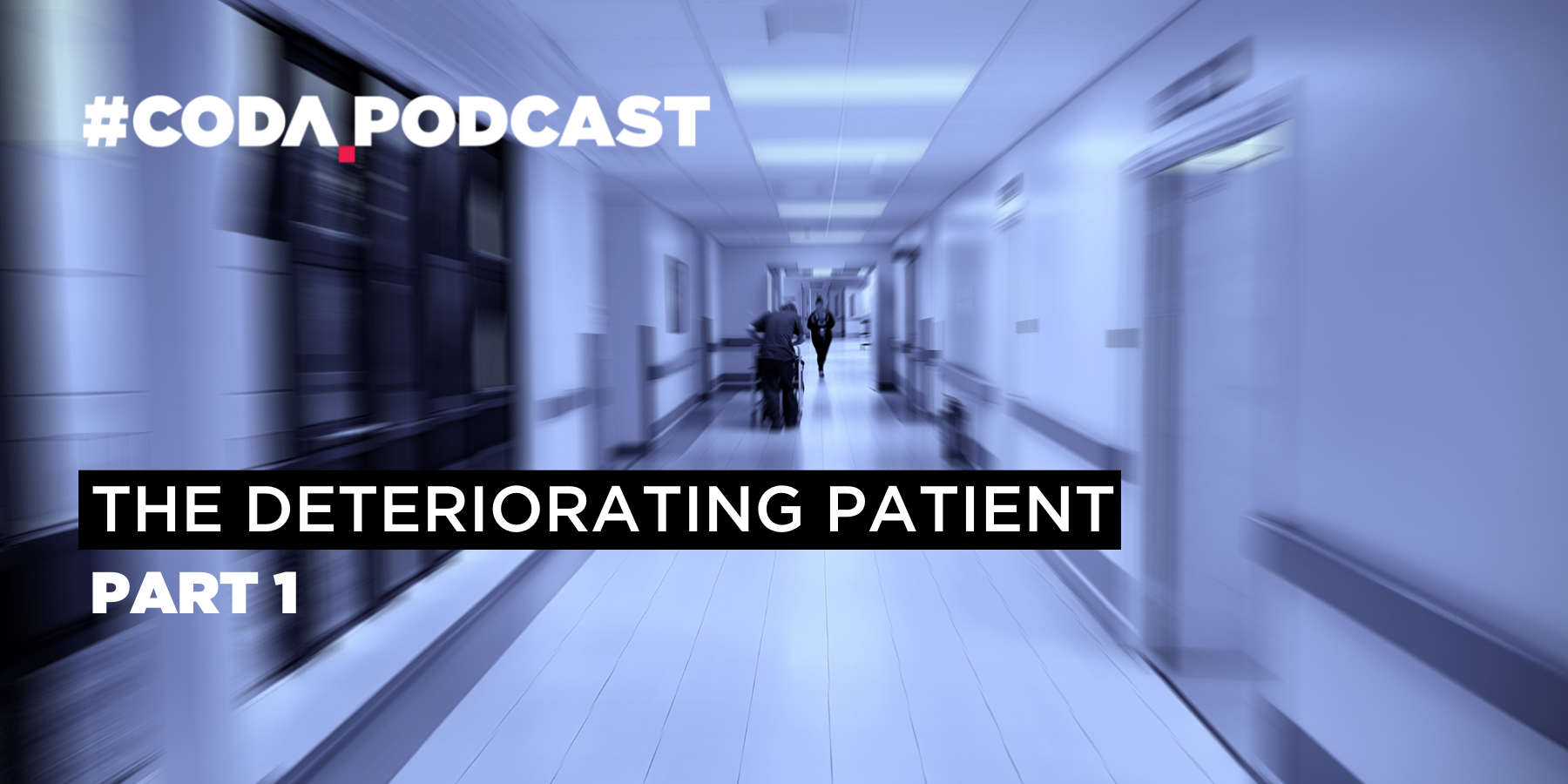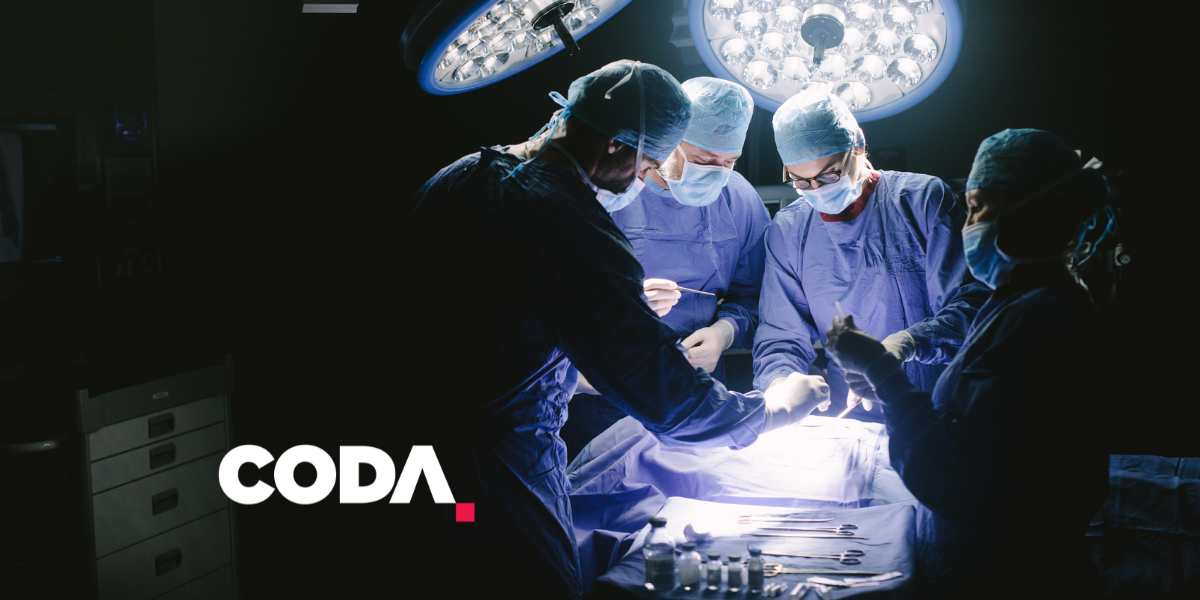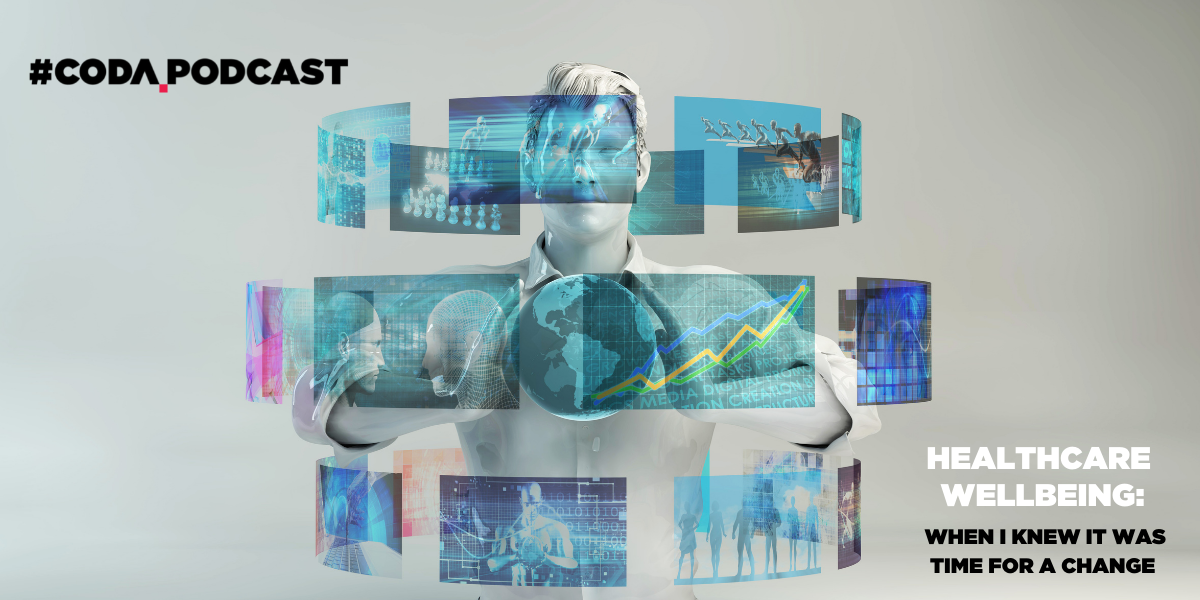In part 2 of this episode of the Coda podcast, Coda co-founder Roger Harris is again joined by Sydney-based Chris Anderson and Lausanne-based Frederic Michard, as they discuss how we can do better when it comes to deteriorating patients.
In part 1, the three intensive care specialists explored precisely what a deteriorating patient is, how big a problem they are and exactly why we should care – in this episode Harris, Anderson and Michard now look at ways in which the problem can be resolved.
Hosted by Roger Harris, he is joined by guests Frederic Michard – a Critical Care MD, PhD and Chris Anderson – a fellow intensive care specialist. Roger speaks to Frederic and Chris about ways in which healthcare professionals can recognise deteriorating patients sooner, and how they should be responded to, as well as discussing both solutions and how deteriorating patients can be better detected.
By way of a resolution, the three experts explore the idea of wearable, mobile solutions and – imagining the future of patient monitoring – they discuss what said solutions might look like, and how they will help nurses monitor deteriorating patients.
They also address the question that arises regarding which patients are most in need of monitoring, concluding that it’s those at the greatest risk of clinical deterioration.
Harris, Anderson and Michard also agree that there is reason to believe that new, future techniques will be able to ensure accurate detection of deteriorating patients, and that smarter software will make such a task more streamlined.
Michard finishes by noting the importance that healthcare professionals focus on individualising not only the monitoring that is on offer, but – equally important – precisely who is going to be monitored and when.
For more like this, head to our podcast page. #CodaPodcast
This podcast is sponsored by GE Healthcare.

About GE Healthcare
Did you know that:
Adverse events in general wards are not uncommon, and many are preventable? Mortality after surgery is 1,000x higher than intraoperative mortality.1
In the ward, vital signs are often abnormal or trending toward abnormal, hours before cardiac arrest or ICU transfer, but clinicians may only suddenly notice because spot-checks are usually done on a 4-6-hour interval?2
Abnormal respiratory rate (RR) has been shown to be an important predictor of serious events, such as cardiac arrest and admission to an ICU?3 Patient safety and ensuring optimal care for recovering patients are priorities for every hospital. A way to do this is to keep patients moving and to continuously monitor key vital signs, including RR. While this sounds easy, finding a simple and reliable way to support monitoring patients in the general ward setting has been a challenge.
Learn more about a new, innovative solution that is meeting this challenge:
https://www.gehealthcare.com.au/products/portrait-mobile
References
Sessler, et al., Beyond Failure to rescue: the time has come for continuous monitoring. British Journal ofAnesthesia 2019, 122(3): 304-306.
Michard, et al., Protecting ward patients. ICU Management & Practice; Vol 19 – Issue 1 (2019).
Cretikos, et al., Respiratory rate: the neglected vital sign. MJA; Vol 188 No. 11, 657-659 (2008).
Roger Harris
Roger Harris is a senior staff specialist in the intensive care unit at the Royal North Shore hospital and the Sydney Adventist hospital (SAN). He is dual qualified in Emergency Medicine and Intensive Care. Roger is one of the co-founders of SMACC and Coda. He is passionate about education, his five children and especially his beautiful wife Georgie.
Frederic Michard
Frederic Michard is a Critical Care MD, PhD, based in Lausanne, Switzerland.
He trained in Paris University Hospitals and in Boston (Anesthesia & Critical Care @ Mass General Hospital-Harvard Medical School).
He is known for his research work and publications (>10,000 citations on Google scholar) on pulse pressure variation (PPV) and fluid responsiveness, and more recently on digital innovations and wearable sensors.





